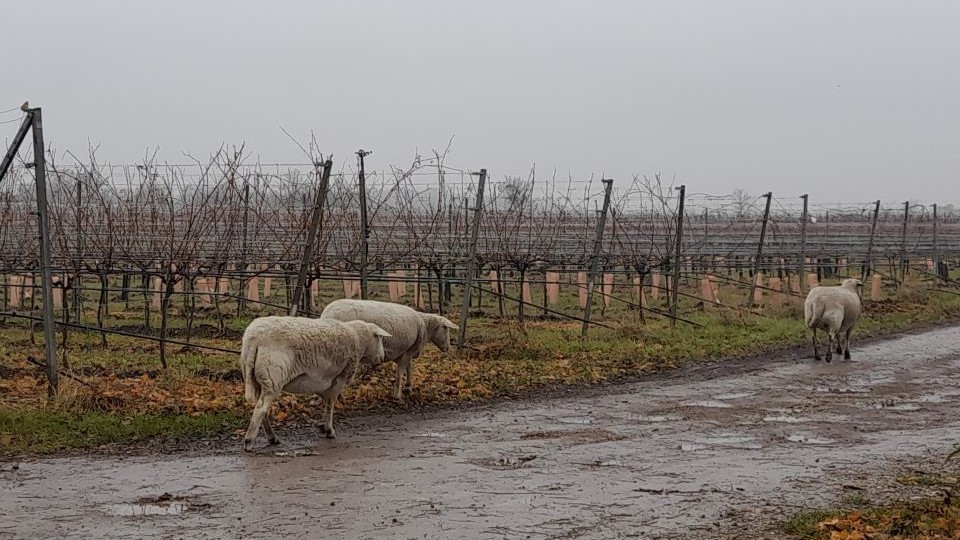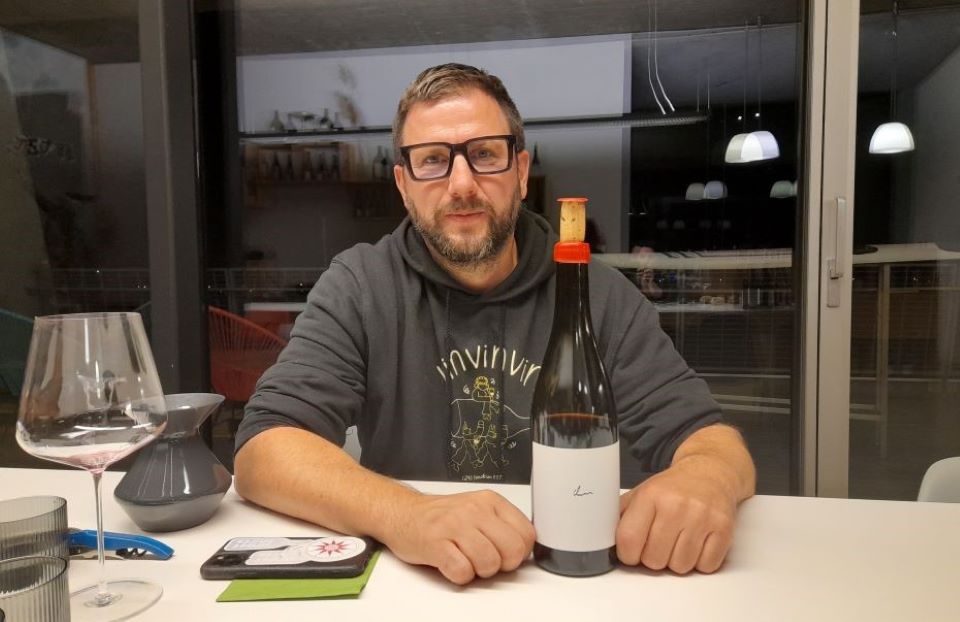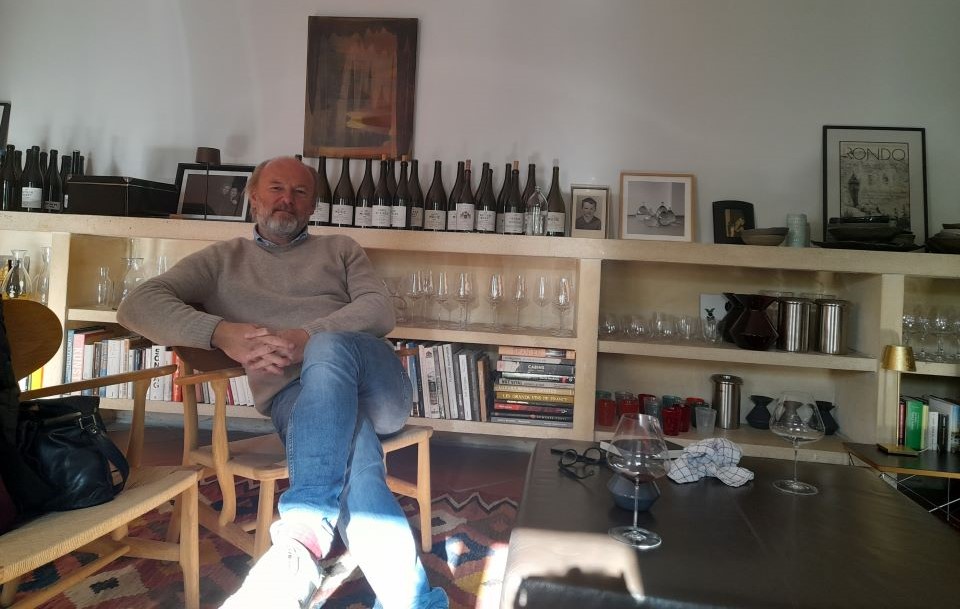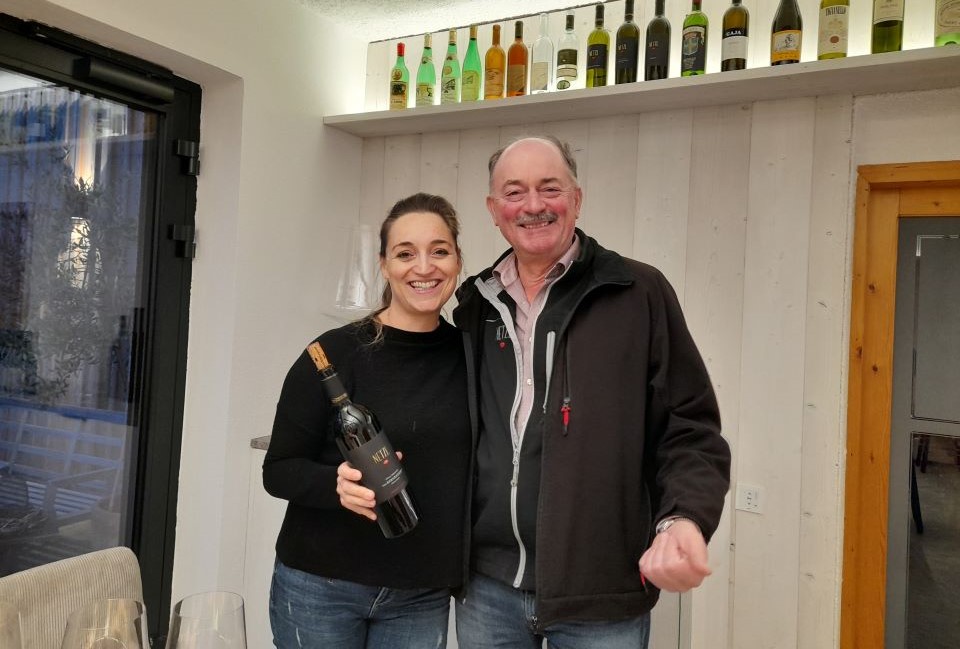Browse using the new Vinous website now. Launch →
Printed by, and for the sole use of . All rights reserved © 2015 Vinous Media
2022 Burgenland and Austria’s East – A Heaven for Unsung but Compelling Reds
BY ANNE KREBIEHL MW | FEBRUARY 15, 2024
A Different Focus
Most people think of Austria’s winelands as the stunning vineyards along the Danube in Wachau and Kremstal or the tributary valleys of Kamptal and Traisental – but there are slightly less renowned regions, too, like the historic Thermenregion south of Vienna. The capital, Vienna itself, is the world’s only state capital with proper vineyards within its city limits, while the relatively new Carnuntum southwest of Vienna and beautiful Burgenland occupy the strip of land along the Hungarian border. What is interesting for the Carnuntum, Thermenregion and Burgenland regions is that red grape varieties dominate. The Thermenregion and its central town of Gumpoldskirchen once almost single-handedly accounted for Austria’s wine fame with blends of two indigenous white varieties, Rotgipfler and Zierfandler. Today, red grapes constitute 42.1% of plantings. The Thermenregion was and still is Austria’s hotspot for Pinot Noir, or Blauer Burgunder, as the variety is called here. Likewise, more than half of Carnuntum vineyards are planted to red varieties, 55.1% to be precise. In Vienna, just 15.8% are planted to reds, but in Burgenland, 56.1% of vineyards are planted to red grapes – and I am pleased to say that Blaufränkisch with 2,420 hectares pips Zweigelt to the post with its 2,303 hectares.

Sheep roaming the vineyards at Johanneshof Reinisch in Tattendorf, Thermenregion.
The Triumph of 2021
The praise and the verdict were unanimous for 2021. Christina Netzl of Weingut Christine & Franz Netzl in Göttlesbrunn, Carnuntum, said: “We have never had such high ripeness with such high acidity as in 2021.” Johannes Reinisch of Johanneshof Reinisch in Tattendorf, Thermenregion said: “In 2021, both ripeness and acidity were high. We were able to harvest relatively late – well into October – with high acidity levels.” Josef Umathum of the eponymous winery in Frauenkirchen, Burgenland, said: “2021 delivered high sugar levels, high phenolic ripeness and fresh acidity. Late August brought cooler nights, and grapes were harvested in cooler temperatures, bringing even more freshness to the wines.” Roland Velich of Weingut Moric in Grosshöflein, Burgenland, recounts the year: “It was relatively dry in spring. Flowering occurred without any problems, and the summer was rather warm, but this is not unusual here. We had good amounts of rain in late August and September. The interesting thing was that 2021 delivered exactly what I looked for: high ripeness without overripeness, without opulence.” The wines, indeed, were a pleasure to taste and will bring much joy in the future.

A defiant and amused Claus Preisinger with one of his wines.
The Dryness of 2022
Burgenland made headlines in 2022 since one of its main landmarks and tourist attractions, the shallow steppe lake Neusiedlersee dried out. It is the presence of the lake and its marshy fringes that favors the development of botrytis in autumn – the foundation of Rust’s Ausbruch wines and the fame which Burgenland’s Beerenauslesen and Trockenbeerenauslesen are built on. In 2022, however, no water could be seen, just an expanse of the lake’s dried-up, muddy bed. Indeed, Gerhard Kracher, famed for his sweet wines from Illmitz on the lake's eastern shore, noted that it was necessary to drop fruit from his young vines to ensure their survival. Josef Umathum provided the figures: the average rainfall is 550 liters (per square meter per annum, equaling 550 millimeters), but in 2022 there were just 35 liters. “Young vines really suffered. The grapes were then harvested in cooler weather, but alcohol levels are moderate due to the vines’ metabolism being slowed down by drought.” Rudi Wagentristl in Grosshöflein on the western shore of Lake Neusiedl, but not directly on the lake, said: “2022 was an extreme year of high temperatures, probably the warmest summer of the past 20 years, and one of the driest. From April to early September, there were no significant rain events, only very localized, heavy rains that ran off without seeping into the soil or very slight rain that dried off immediately in the wind. It was challenging.” He also noted that the ferments took time in 2022 due to low nutrient levels in the grapes, brought on by lack of water. Andi Kollwentz, also in Grosshöflein, on a more positive note, said that a rain shower on the 20th of August really “rescued” his vines.
What must be emphasized, though, is that many vineyards are on limestone and calcareous loams, which have more water-holding capacity, and while there are slopes, there is no real steepness, all of which mitigates drought. The 2022 white wines were rounded and ripe but certainly not opulent. The best winemakers managed to capture freshness. And with a year like 2022 being an unmistakable taste of the future, many spoke of the fact that Furmint, which keeps its acidity, or Hárslevelű, which despite heat does not clock up much alcohol, are definite white wine varieties for the future. The latest statistics show that currently there are almost 28 hectares of Furmint in Burgenland. Hárslevelű does not show up on the statistics yet, neither is it a permitted variety that can be named on a label – and this is despite the fact that there is a perfectly good and beautiful German name for this Hungarian variety: Lindenblättriger. I am sure we will hear more of both in the coming years. The dry Furmints I tasted were stunning.

Birgit Braunstein in her cellar in Purbach where mottos like 'Weisheit' (wisdom), 'Genuss' (enjoyment) and 'Klarheit' (clarity) grace the barrels.
2022 Further Afield
In Vienna, 2022 was likewise hot and dry. Rainer Christ remembers a “turbulent” harvest punctuated by rain. “There was real drought just before harvest; the vines no longer had water, and in the course of August, there almost was a vegetative stop. Rain at the end of August revived the vines, and from then on, they developed with stability. The dry stress over a few weeks meant a long hang time without exploding ripeness. In the end, it was a fine year but nowhere near as homogenous as 2021 or 2019.” In the Thermenregion, Johannes Reinisch was lucky to escape rain during harvest. For him, it is a vintage with “lower acidity, a bit more approachable with good physiological ripeness.” Bernhard Stadlmann of Weingut Stadlmann in Traiskirchen, Thermenregion, notes that “from mid-May onwards it was warm and dry until August, then just before the harvest a little rain came.” This made them fear rot, “but the vines absorbed the rain and continued. We had to reduce yields, and the vines slowed down a little, but the acidity was stable. We were surprised.”
The Noble Blaufränkisch
The singular recognition that defined my Burgenland visits was the absolute nobility of Blaufränkisch. Sure, I was a fan before. I knew of the variety’s pedigree and the longevity of the wines. What I had not encountered as starkly or as consciously before was that the grape shone in whatever way it was made into wine. Between appointments in the car, I tried to wrap my thoughts around the various stylistic expressions of different winemakers and estates, but then I realized that while the wines told me a lot about the winemakers’ ideas and preferences, they told me even more about Blaufränkisch itself. A bit like a Shakespeare play that works in an over-the-top production staged by Zeffirelli, or with no props at all, performed in a bare prison courtyard, Blaufränkisch has an indelible character that shows its inherent quality no matter in which way it is made. I had the palest Rosés, sumptuously extracted, oaked and inky reds, exquisitely aromatic renditions of Pinot-esque finesse and nuance – as well as fresh-faced, juicy wines to drink during a picnic, redolent of cherry and pepper. It is a variety that requires heat to ripen – and there is much of that in the ultra-continental summers of Burgenland – as there is in Hungary, where the variety is known as Kékfrankos. Despite loving sunshine, the variety comes with high acidity – a boon when it comes to climate change – and thus a grape for the future.

Roland Velich of Weingut Moric at home in Grosshöflein.
In The Wrong Place
Blaufränkisch is not widely recognized or planted globally. This is because it is considered the noble grape of Mitteleuropa, i.e., Central Europe, mythologized in Hungarian and only later in German. It enjoyed great currency in the Habsburg Empire, which ended in 1918. For most of living memory now, Blaufränkisch was almost hidden behind the Iron Curtain. But there is more. This noble grape was also ignored by the West, which was dominated, as the genre of wine writing began in earnest by French wines and English writers. And while 1986 is often cited as the year of the rebirth of Blaufränkisch, when Ernst Triebaumer stunned critics with his wine from the Mariental site in Rust, it took longer for Blaufränkisch to be fully embraced by Austrians. Roland Velich of Weingut Moric provided a lot of context. He noted that while Triebaumer’s wine was a landmark, the red wine boom in Austria that followed the wine scandal happened on the back of international grape varieties like Cabernet Sauvignon and Merlot, which even then ripened in the sunny summers of Burgenland. “It was not that the Mariental wine kicked off a great revival of Blaufränkisch; no Austrians did what others expected of them, producing premium blends that contained Blaufränkisch alongside international varieties.” These wines were made in extracted styles, matured in new wood, hitting the red wine fashion of the day, joining the Supertuscans as big, bold wines. It is only now that Blaufränkisch is in the ascendancy that the zeitgeist has caught up with what is local, historic and authentic.

Heidi Schröck with her thrilling Furmint Auslese wines.
Historic Complexity
History provides an explanation. Until 1921, Burgenland, with its capital Sopron, was part of Hungary. It had been Hungarian for centuries. Even under the Habsburgs and their Austro-Hungarian Empire, most of Burgenland was dominated by aristocratic Hungarian families like the Esterházys. Burgenland’s culture and customs thus were Hungarian, even though much German was spoken, along with Croatian and Hungarian. Burgenland – devoid of its capital, Sopron – only became a part of Austria in 1922. The turbulent decades of the 1930s and 1940s culminated in Soviet occupation, which did not end until 1955. Burgenland, with its non-industrialized, chiefly rural population, counted itself lucky to be part of the West and henceforth looked towards Vienna. Cultural awareness – also of the historical greatness of the indigenous Blaufränkisch grape – was not a priority in the face of grinding poverty. Velich puts it even more strongly when he says that Burgenland was “colonized,” obliterating historical awareness of the great Hungarian wines, its ancient wine classifications and its quality ethos. These had not survived after their routes to market, structures and consumers, namely a local Hungarian aristocracy and bourgeoisie and an often Jewish-dominated wine trade, were decimated, prosecuted and even murdered during the political turbulences of the two World Wars. While viticulture remained a key part of farming, to this day, in rather fragmented holdings, a quality ethos was not re-discovered until decades later. Indeed, the Österreichische Traditionsweingüter, which has steadily worked on the classification of vineyards since its foundation in 1991, currently has no members in Burgenland. This explains a cultural divide that still exists, a gap that needs to be closed. Burgenland has ancient and historic vineyards that the Hungarian kings once prized and even owned. It also has its noble grape variety in Blaufränkisch.

A wonderful father-and-daughter team - Christine and Franz Netzl in Carnuntum.
A Slow Revival
Thus, when the big red wine wave hit Austria in the late 1980s and early 1990s, most people not only lacked trust in their local variety, but they were also mostly unaware of its great history. Admittedly, it was also a time when the entire world set store by a handful of international varieties and when marketing an obscure grape variety with many consonants and an umlaut was an even greater obstacle than it is today. Velich was a contrarian and, in his own words, “wanted to see what happens when a few parameters are changed, like using old vines, low yields and larger barrels, and doing this in different sites.” He moved his gaze away from Bordeaux and Tuscany towards Burgundy and Piedmont. This is where he learned that great wine was about “differentiation of site” and “having faith in its own substance.” He says that he “wanted to make wine in an almost archaic way to see what this would tell me. I committed Stilbruch [i.e., a break with convention], and I freed myself from the dictate of small barrels and new wood. I looked towards wines that have coolness and freshness at a time when only power and ripeness were important – when what is important, in fact, is nuance, delicacy and coolness. Making such wine is only possible in a few privileged regions with indigenous grape varieties.” Burgenland has its noble indigenous variety in Blaufränkisch and now also numerous winemakers who tune into its inherent nuance and finesse. Hopefully, the world will wake up to the quality and potential of this variety.
NB: All statistical planting data is sourced from Dokumentation Österreich Wein, Stand 04 December 2023, published by the Austrian Wine Marketing Board, Vienna.
© 2024, Vinous. No portion of this article may be copied, shared or re-distributed without prior consent from Vinous. Doing so is not only a violation of our copyright, but also threatens the survival of independent wine criticism.
You Might Also Enjoy
2022 Wachau and Lower Austria: An Overshadowed Vintage Worth Exploring, Anne Krebiehl MW, February 2024
2022 Rheingau, Pfalz and Mittelrhein: Before, During and After the Rain, Anne Krebiehl MW, December 2023
2022 Mosel-Saar-Ruwer: Old Vines and Steep Challenges, Anne Krebiehl MW, October 2023
Show all the wines (sorted by score)
- Andi Kollwentz
- Birgit Braunstein
- Christ
- Claus Preisinger
- Dorli Muhr
- Ernst Triebaumer
- Feiler-Artinger
- Hajszan Neumann
- Hans & Anita Nittnaus
- Heidi Schröck
- Heidi Schröck & Söhne
- Heinrich Hartl
- Hidden Treasures
- Johannes Gebeshuber
- Johanneshof Reinisch
- Josef Umathum
- Moric
- Netzl
- Pittnauer
- Prieler
- Reunion
- Silvia Heinrich
- Sohm & Kracher
- Stadlmann
- Tinhof
- Trapl
- Wagentristl
- Weinlaubenhof Kracher
- Wieninger
